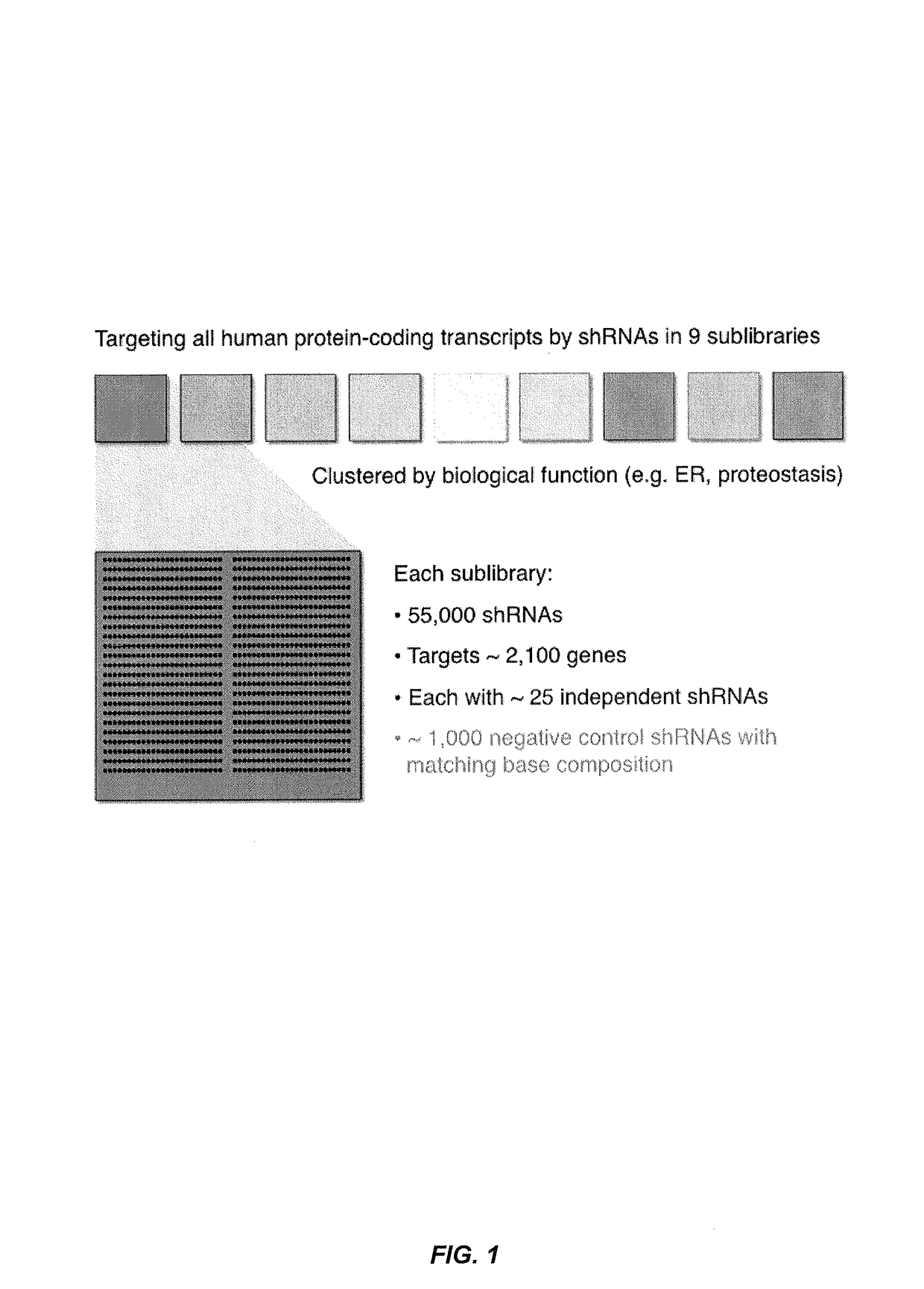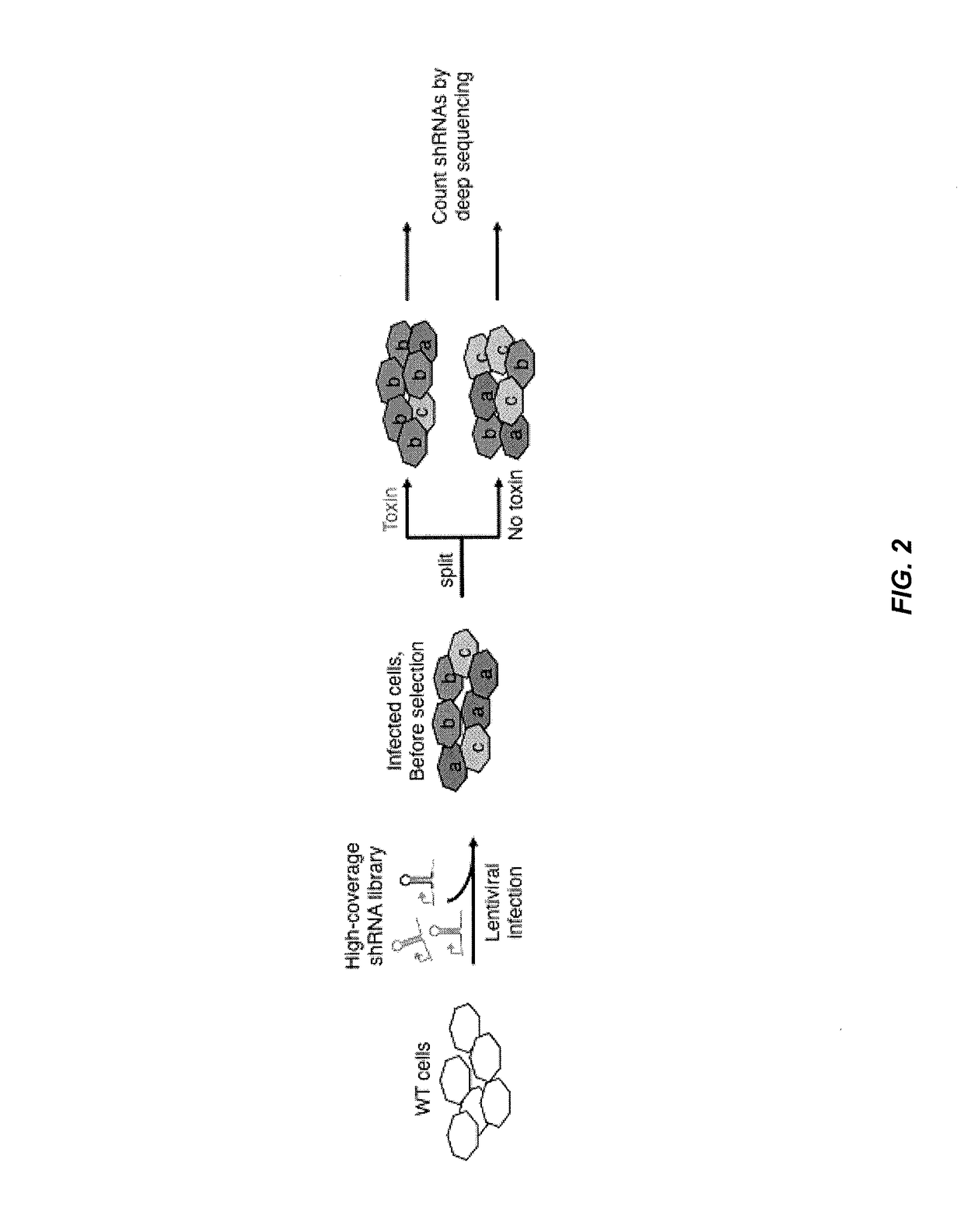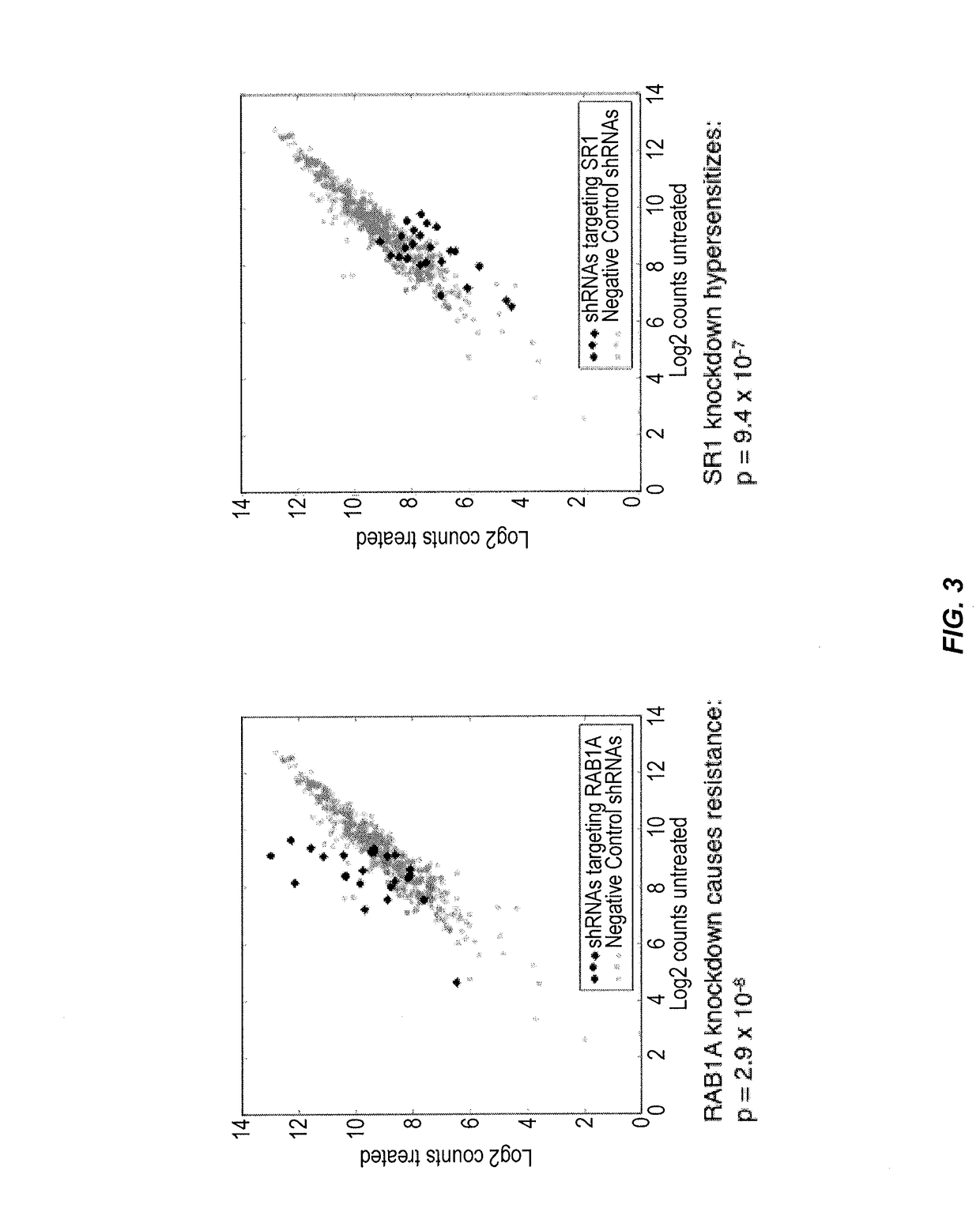Methods for genome-wide screening and construction of genetic interaction maps
a genome-wide screening and mapping technology, applied in the field of genome-wide screening and mapping of genetic interaction, can solve the problems of hampered rnai screening technology, high incidence of off-target effects, and inability to assess whether, or how, and no current methods
- Summary
- Abstract
- Description
- Claims
- Application Information
AI Technical Summary
Benefits of technology
Problems solved by technology
Method used
Image
Examples
example 1
ference-Based Genetic Interaction Maps
[0214]This example illustrates embodiments of the present invention for conducting an RNAi-based primary screen to identify hit genes and for conducting secondary screens using double RNAi constructs to knock down all pairwise combinations of the hit genes identified from the primary screen, thereby identifying genetic interactions between these hit genes to predict functional associations between genes and identify drug targets for therapy.
1. Design of Ultra-Complex shRNA Libraries for Primary Genome-Wide Screens
[0215]An ultra-complex shRNA library targeting each protein-coding gene in the human genome with ˜25 independent shRNAs on average was designed (FIG. 1). The library was divided into 9 sublibraries containing 55,000 shRNAs each. The shRNA sequences were designed using several algorithms and also incorporated shRNA sequences known to be efficacious.
[0216]Each sublibrary contains a set of ˜1,000 negative control shRNAs, which were designe...
example 2
ening Platform for the Rational Development of Polytherapies Against Cancer
[0227]This example illustrates application of the RNAi-based screening methods of the present invention for the rational development and design of polytherapies for the treatment of cancer.
[0228]Currently, enormous volumes of data are being generated by the comprehensive molecular characterization of a number of human tumors. The ability to effectively and efficiently use RNAi to assess the biologic consequences of gene target inhibition is of critical importance to understanding gene function and to uncover tumor-specific vulnerabilities. The identification of tumor-specific vulnerabilities provides rationale for the development of biologically-based targeted therapies. RNAi screening is a powerful technology for high-throughput gene function discovery that has been used to identify tumor-specific vulnerabilities.
[0229]However, there are significant limitations to the RNAi screening resources that are curren...
example 3
RNAi-Based Mammalian Genetic Interaction Maps
[0267]An ultra-complex shRNA library targeting each protein-coding gene in the human genome with ˜25 independent shRNAs on average was designed (FIG. 1). The library was divided into 9 sublibraries containing ˜55,000 shRNAs each. The shRNA libraries of the invention have at least the following advantages: (1) many shRNAs per gene address false negative and false positive problems; (2) rapid screening using shRNA pool vs. multiwell plates; (3) high fidelity oligonucleotides enable direct cloning and use of library (˜1 week); and (4) highly adaptable means that one can easily change design to incorporate different promoters, improved shRNA algorithms, double shRNAs, etc.
[0268]A primary shRNA screen for ricin resistance / sensitization using the methods of the present invention was performed to identify genetic interactions between genes involved in ricin resistance and / or sensitization. In particular, a pooled shRNA screen in K562 cells was p...
PUM
| Property | Measurement | Unit |
|---|---|---|
| frequencies | aaaaa | aaaaa |
| frequency | aaaaa | aaaaa |
| nucleic acid | aaaaa | aaaaa |
Abstract
Description
Claims
Application Information
 Login to View More
Login to View More - R&D Engineer
- R&D Manager
- IP Professional
- Industry Leading Data Capabilities
- Powerful AI technology
- Patent DNA Extraction
Browse by: Latest US Patents, China's latest patents, Technical Efficacy Thesaurus, Application Domain, Technology Topic, Popular Technical Reports.
© 2024 PatSnap. All rights reserved.Legal|Privacy policy|Modern Slavery Act Transparency Statement|Sitemap|About US| Contact US: help@patsnap.com










